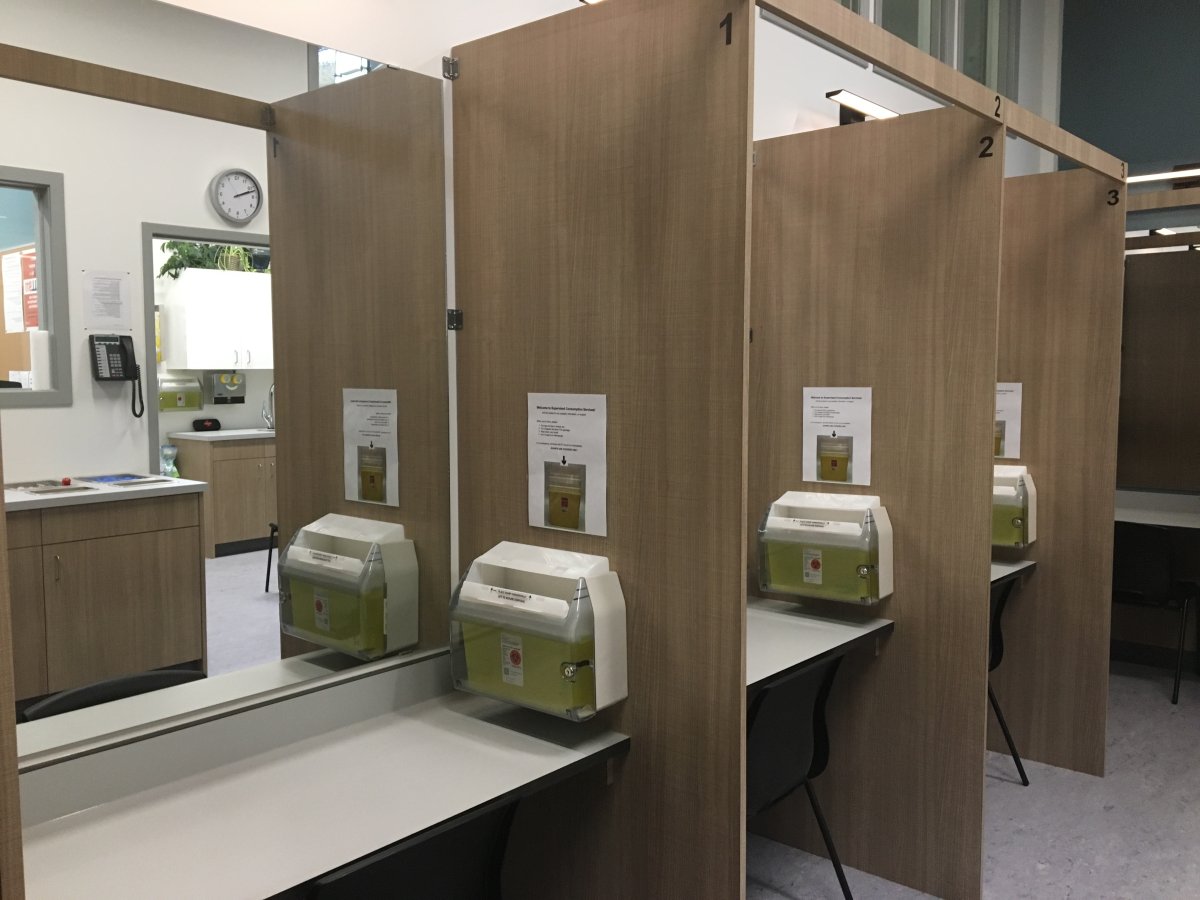It’s been a year since Saskatchewan established its fentanyl task-force. During question period on May 28, Opposition Leader Ryan Meili raised questions concerning the lack of recommendations.

Meili focused his questions on harm reduction strategies, specifically safe-injection sites and needle exchanges. The province has no safe-injection sites, but there are several needle exchanges.
Health Minister Jim Reiter pointed to the increased availability of naloxone, an injection that temporarily reverses the effects of an opioid overdose. Naloxone became an unscheduled drug in Saskatchewan earlier this month so it could be distributed without the need for a pharmacist.
READ MORE: Naloxone made more widely available in Saskatchewan
Reiter said these are the main two items to come from the task force, following in the footsteps of British Columbia and Alberta.
Marie Agrioritis came to the legislative building from Saskatoon, calling for increased resources. She lost her son, Kelly, to an accidental fentanyl overdose in January 2015.
“We were away for the weekend, got a phone call, and I’d never left him home alone. First time after 19 years, and got a phone call at 10 o’clock in the morning that he had taken half of a pill and it was a clandestine fentanyl pill,” Agioritis said.
“He thought it was OxyContin, and that half of a pill held the predominant amount of the fentanyl in it. It was a small amount, just his body wasn’t used to it, and subsequently he died within 20 minutes. “
- Canadian man dies during Texas Ironman event. His widow wants answers as to why
- Invasive strep: ‘Don’t wait’ to seek care, N.S. woman warns on long road to recovery
- ‘Super lice’ are becoming more resistant to chemical shampoos. What to use instead
- Canadians more likely to eat food past best-before date. What are the risks?
Agioritis said she has seen more of a willingness in British Columbia and Alberta to explore harm reduction methods like safe-injection sites, needle exchanges and providing naloxone.
She believes those provinces, which have seen more problems with opioids than Saskatchewan, have shown more willingness to discuss issues directly with user groups and those how have been directly affected like herself.
For safe injection sites, Reiter has concerns. He pointed to divided opinions on the sites in communities where they exist and Saskatchewan’s population demographics.
“Part of the issue that’s been pointed out to me by our officials, in Saskatchewan we have a very spread population, small population over a huge area. Generally they’ve been implemented in very large cities with very dense populations,” Reiter said.
When asked about areas like Kamsack that do have concentrated opioid issues in a small town, Reiter said he is unaware of any data pointing to success of safe injection sites in that setting.
“Is that going to be effective in a very small community, in a very small town? I don’t know. I’ll certainly look to the experts on that, but I’m not sure that there’s been any examples across the country of safe injection sites in a small town of just a few hundred people,” Reiter said.
“What I’m hearing when I hear that response isn’t a we’ve looked at this that’s not a fit and the community doesn’t want it. It’s more we don’t want to look at this, so let’s find a way not to talk about it,” Meili said.
Reiter said trying to compare the downtown eastside of Vancouver to Kamsack is like comparing apples to oranges. Meili agreed there are differences, just like in central Saskatoon and Prince Albert but said more still needs to be done.
“Go in talk to the people that are using drugs, talk to the people providing care in terms of addictions treatment, talk to the people who are using to get supports, and say what’s actually happening here, and look at what the options are” Meili said.
Reiter will have a meeting with Agioritis at some point in the near future.
“Politically I have no stand either way I just want action,” Agioritis said. “Our government here, all they have to do is ask the questions and they’ll get a list of responses of what is the effective way to deal with it. Is the wish there? It might be, but let’s see what the effort is.”
For future work of the task force, Reiter said that their objective is not to produce a formal report to the province but serve as cross-ministry advisory role.
Saskatchewan has also introduced a prescription review, aimed at helping ensure opioid painkillers, like fentanyl are prescribed properly.



Comments